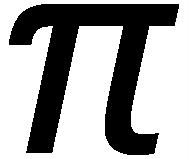Are you Pi-shaped?
I once heard a very senior I/T Architect in IBM talk about how the best I/T Architects are Pi-shaped. I wish I could remember his name but let me try to explain his remark.
Imagine if you will, that all possible skill categories make up the horizontal axis across the top of a big skill rectangle.
- Java
- J2EE
- Database
- Middleware
- Object-oriented analysis and design
- Legacy system integration
- Networking, Firewalls, Load balancing
- Security
- Manufacturing industry
- Banking industry
- Insurance industry
- Facilitation skills
- Project Management
- etc.
Now imagine that the vertical axis of this big skill rectangle from top to bottom represents the level of skill
- The 30,000 foot view, the business executive summary view
- The 10,000 foot view, the I/T executive view
- The 1,000 foot view, the first level I/T manager who remembers programming view
- The 500 foot view, the programmer or DBA view
- The 100 foot view, the view of the guy who reads all the manuals for fun
- The 10 foot view, the view of the guy who wrote the low-level device driver code
You can image that each person has some combination of horizontal breadth of knowledge as in "I know a little bit about a lot of things." and vertical slices of expertise as in "I know how every layer of this technology works from concept to low-level coding and performance tuning."
This wise I/T Architect's opinion was that the very best I/T Architects are Pi-shaped as in the Greek letter Pi. He said all good architects have a broad spectrum of knowledge across the top layers of the skill rectangle. Yes, I know nobody knows everything, but through their experience they have seen almost every type of technology applied to a variety of business situations. He said they also have at least a couple of vertical slices where they have the ability to take a "deep dive" into extreme levels of detail. Hence, a "Pi-shaped" I/T Architect. Even better if you can be a three-legged or four-legged table.
The postings on this site are my own and don't necessarily represent IBM's positions, strategies, or opinions.



4 comments:
found it interesting and informational....looking forward to read future postings
anshul, thanks for stopping by.. and don't let me get lazy!
I see a number of other folks (although after your posting here) have attributed the concept to: Nicholas Donofrio, retired IBM Executive Vice President of Innovation and Technology. Is this who you were thinking of? I cannot see a reference to Donofrio prior to your post here, so it is unclear...
Thanks Ashley. I don't remember it coming from Nick Donofrio but it is possible whoever told me heard it from him first. It is very possible.
Post a Comment